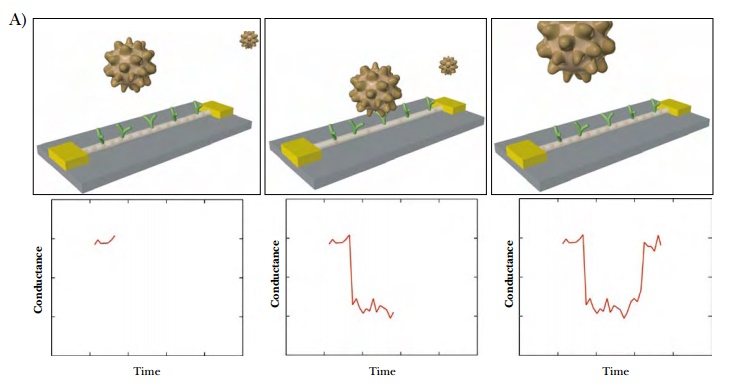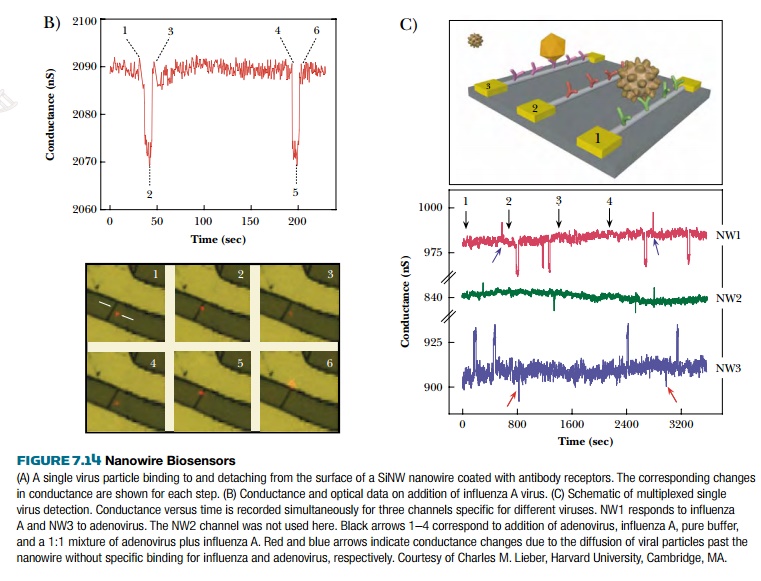Chapter: Biotechnology Applying the Genetic Revolution: Nanobiotechnology
Detection of Viruses by Nanowires
DETECTION
OF VIRUSES BY NANOWIRES
Nanowires are what their name suggests. They have nanoscale diameters but may
be several microns long. They may be
metallic and act as electrical conductors or they may be made from
semiconductor materials.
Biosensors can be made using
silicon semiconductor nanowires. These may be coated with antibodies that bind
to a specific virus. Binding of the virus to the antibody triggers a change in
conductance of the nanowire. For a p-type silicon nanowire, the conductance
decreases when the surface charge on the virus particle is positive and,
conversely, increases if the virus surface is negative. Single viruses may be
detected by this approach (Fig. 7.14). It is also possible to attach
single-stranded DNA to the nanowire. In this case, conductance changes are
triggered by binding of the complementary single strand. Possible future
applications include both clinical testing and sensors for monitoring food,
water, and air for public health and/or biodefense.


Related Topics